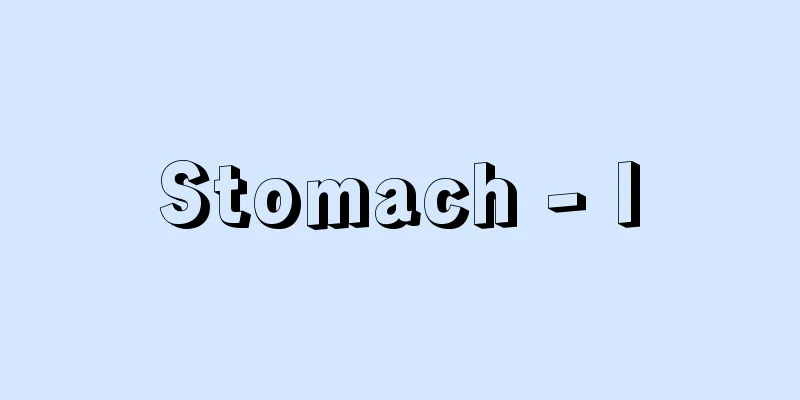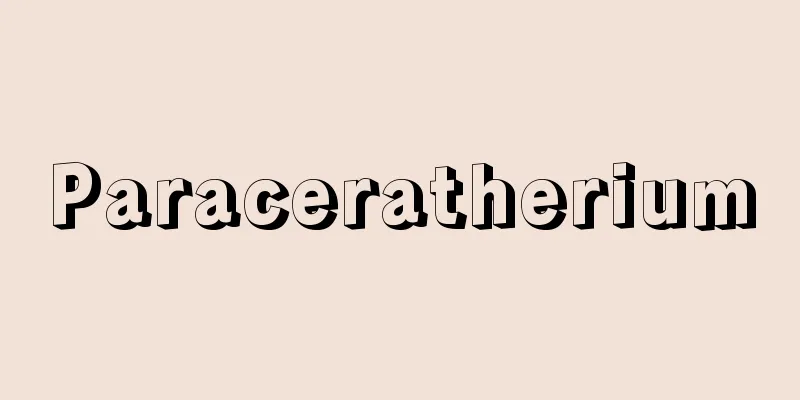Stomach - I

|
It is the most distended part of the digestive tract and is located between the esophagus and the duodenum (small intestine). Stomach ShapeThe shape and size of the human stomach are not uniform, but it is typically a pouch with a large upper part and a long axis that runs from the upper left rear to the lower right front. When empty, it is a flat pouch from front to back, but when full, it is hook-shaped whether the patient is standing or sitting. During autopsy, the stomach is inflated like a pouch due to muscle relaxation. When the stomach is moderately filled, five-sixths of the entire stomach is to the left of the midline of the body, and only the narrow part of the stomach is to the right. When the stomach is empty, the lowest end of the stomach (the fundus of the greater curvature) is about three finger widths above the navel in adults. The part of the stomach that transitions from the esophagus to the stomach is called the cardia, and the cardia is where the stomach enters the gastric cavity. The cavity suddenly expands, but most of it is the body of the stomach, and the bulge at the upper left end of the body of the stomach is called the fundus. The fundus is located at the same height as the anterior end of the 10th rib. The body of the stomach becomes a thin tubular section toward the exit, i.e. the pylorus, and the boundary with the duodenum is the pylorus. Looking at the stomach as a whole, the anterior wall faces slightly anteriorly and superiorly, and the posterior wall faces posteriorly and inferiorly. The transitional parts between the anterior and posterior walls are both arch-shaped, opening upwards, with the upper edge being the lesser curvature and the lower edge being the greater curvature. In Japanese people, the length of the lesser curvature is 12 to 15 centimeters, and the greater curvature is 42 to 50 centimeters. The average capacity for Japanese adults is 1407.5 cc for men and 1275.0 cc for women. [Kazuyo Shimai] Structure of the StomachThe structure of the stomach wall is divided into the serosa, muscularis, and mucosa from the outside to the inside. The serosa is a continuation of the peritoneum, covering the entire stomach and transitioning into the lesser omentum and greater omentum at the lesser curvature and greater curvature, respectively. The muscularis consists of three smooth muscle layers. From the outside, longitudinal muscles, circular muscles, and oblique fibers are arranged. It almost continues from the muscular layer of the esophageal wall, but the circular muscles are the most well developed and are of almost average thickness. The oblique fibers are a continuation of part of the esophageal circular muscle, and disperse obliquely from the cardia but do not reach the pylorus. At the pylorus, the circular muscles form a particularly thick pyloric sphincter and surround the pyloric opening. When the stomach is empty and in a contracted state, the mucosa forms numerous longitudinal folds, and there are also short folds that connect these folds horizontally. During stomach distension, these folds disappear, but three or four folds along the lesser curvature remain and serve to move the stomach contents toward the duodenum. The mucosal surface is divided into small polygonal sections, 2-3 mm in size, called gastric regions. Within the gastric region, there are numerous small depressions called gastric pits, at the bottom of which several gastric glands open. The gastric glands secrete gastric juice, but are formed when the mucosal epithelium penetrates into the lamina propria of the mucosa. The fundus and body of the stomach have proper gastric glands (fundic glands), while the pyloric glands are only found in the pylorus. The cells that make up the proper gastric glands are chief cells, parietal cells (parietal cells), and accessory cells. The majority of gastric glands are chief cells, which secrete pepsinogens (gastric juice building blocks) and milk-clotting enzymes. Accessory cells are found in the neck of the gland near the gastric pits, and contain mucus. Parietal cells are found throughout the gland, but are particularly abundant in the neck of the gland, and secrete hydrochloric acid. On the other hand, the pyloric glands are made up of one type of cell and resemble the cardiac glands. The cardiac glands are a small number of glands surrounding the cardia and are mucous glands similar to the cardiac glands of the esophagus. The relationship between the stomach and the surrounding organs is that most of the stomach is contained within the upper abdomen and left lower rib area, while the lesser curvature, cardia, and pylorus are covered by the left lobe of the liver. Part of the greater curvature is covered by the transverse colon, and the roughly triangular part on the right side directly touches the anterior abdominal wall, while behind the stomach are the left kidney, adrenal gland, and pancreas. The fundus of the stomach is in contact with the lower left surface of the diaphragm, and is also in contact with the spleen and left lobe of the liver. The blood vessels that supply nutrients to the stomach are those that branch off from the celiac artery, a branch of the abdominal aorta, and are distributed directly to the stomach, and those that branch off from the celiac artery and go to the liver, spleen, or duodenum. Venous blood from the stomach, along with venous blood from the spleen, pancreas, and duodenum, all drain into the portal vein. The lymph nodes around the stomach receive the lymphatic vessels that circulate through the stomach wall. Understanding the distribution of these lymph nodes is important for the metastasis and treatment of stomach tumors. [Kazuyo Shimai] Physiological effectsFood carried from the esophagus is piled up in layers in the stomach, and is sent to the pyloric antrum by peristalsis, which occurs approximately once every 25 seconds, from the center of the stomach body. In the pyloric antrum, peristalsis becomes stronger and proceeds toward the pyloric sphincter, but this sphincter is usually closed, and the contents reverse here and are stirred and mixed. During this time, the gastric juice makes the stomach contents acidic, and the starch-decomposing action of saliva stops. In addition, the pepsin contained in the gastric juice is acidic and works well, breaking down the protein in the food into peptone, turning it into a semi-fluid gruel-like substance called chyme. This chyme is sent little by little through the pyloric sphincter to the duodenum due to the pressure difference between the pyloric antrum and the duodenum. The time it takes for food to be emptied from the stomach into the duodenum varies depending on the type of food, but fatty meals delay emptying from the stomach. This is because fat that enters the duodenum secretes a hormone called enterogastrone, which inhibits gastric motility. The physical properties of food also affect the time it takes for food to be emptied. Liquids are excreted faster than solids, while solids remain in the stomach until they become semi-liquid and are stirred, delaying their emptiness. Stress also acts as an inhibitor of gastric motility, delaying emptiness. Almost no food is absorbed in the stomach, except for alcohol, which is well absorbed. [Santa Ichikawa] Regulation of gastric motilityIn the stomach wall, there are two nerve groups called the Auerbach plexus between the muscular layer and the Meissner plexus under the mucosa, which connect to the splanchnic nerves (sympathetic nerves) and the vagus nerves (parasympathetic nerves). It is generally known that the vagus nerve promotes gastric motility and the visceral nerve inhibits it, but the vagus nerve contains inhibitory fibers and the visceral nerve contains facilitatory fibers, and these regulate gastric motility in a complex manner. The medulla oblongata contains the gastric motility center, and the small intestine/gastric motility inhibitory reflex occurs through this center. This refers to the inhibition of gastric motility triggered by chemical stimulation or stretching stimulation of the small intestine, and it is said that this reflex is weakened when the vagus nerve is cut. In addition to this, there are also the small intestine/gastric motility promoting reflex and the large intestine/gastric motility inhibitory reflex. Gastrin, a hormone secreted from the gastric mucosa, mainly promotes the secretion of gastric juice, but also promotes gastric motility. In addition, cholecystokinin secreted from the duodenal mucosa also promotes gastric motility, while secretin and GIP (gastric inhibitory polypeptide) inhibit gastric motility. Chemical substances secreted from the mucous membrane of the digestive tract to regulate gastric motility and secretory function are called gastrointestinal hormones. [Santa Ichikawa] Stomach conditionsThe stomach protects the stomach wall with the mucus membrane and the mucus secreted from it, and also prevents itself from being digested by enzymes in the mucosal cells. When this protective effect weakens, gastric juices act and cause ulcers. These are called gastric ulcers or peptic ulcers, and are said to be related to the alteration of secretory function caused by autonomic nervous system imbalance or stress. Symptoms include stomach pain, vomiting, and vomiting of blood. In addition to gastric ulcers, gastritis and stomach cancer are important gastric pathologies and are said to be the three major stomach diseases. In addition to these, gastric atony, in which the tone of the stomach wall is reduced, and stomach spasms, in which the tone of the vagus nerve is increased reflexively or centrally due to intoxication, leading to contracture of the entire stomach, are also frequently seen. [Santa Ichikawa] Animal stomachAmong vertebrates, the stomach of most mammals is one chambered and similar to the human stomach. The exception is the ruminant stomach of ruminants such as cows and deer, which has four chambers (from the entrance: rumen, honeycomb stomach, obutoma, and abomasum) or three chambers (there is no differentiation between the obutoma and abomasum). The stomach of birds has two chambers: the proventriculus (glandular stomach) and the gizzard (a chewing stomach made of an extremely thick muscular wall). The stomachs of most fish, amphibians, and reptiles are pouch-shaped and form an extension of the intestinal tract. The morphological and functional differentiation of the part of the stomach that is called the stomach of invertebrates varies depending on the type of animal. The food vacuole of protozoa is also called a pseudostomach. The inner cavity of the body of sponges is called the gastric cavity, and the enlarged part between the mouth and the radial water tube is called the stomach in jellyfish-type coelenterates. The part between the esophagus and the intestine of nematodes is called the glandular stomach. The stomachs of nematodes, leeches of annelids, bivalves of mollusks, insects and spiders of arthropods, and other animals have various shapes and numbers of bulging blind pouches (gastric blind pouches). Some bivalves, gastropods, and crustaceans and insects of arthropods have a filtering stomach that separates food and sends it to the next digestive organ, while rotifers, oligochaetes of annelids, and crustaceans of arthropods have a chewing stomach that breaks down food. Insects that feed on liquids (such as flies and mosquitoes) have a sucker stomach that can temporarily store large amounts of food. [Masayuki Uchibori] "The Fundamentals and Clinical Practice of Gastric and Intestinal Motility" by Takehiko Zeniba (1979, Shinko Trading Medical Book Publishing Division)" "New Physiology, Volume 2, 5th Edition, edited by Naoki Toda, Koji Uchizono, Masao Ito, and Tadao Tomita (1982, Igaku Shoin)" [Reference items] | | | | | | |©Shogakukan "> Stomach area ©Shogakukan "> Names of parts of the stomach ©Shogakukan "> Cross-section of the stomach wall and gastric gland cells ©Shogakukan "> Gastric motility ©Shogakukan "> Animal digestive tract Source: Shogakukan Encyclopedia Nipponica About Encyclopedia Nipponica Information | Legend |
|
消化管を通じてもっとも膨らんだ部分で、食道と十二指腸(小腸)との間に位置する。 胃の形状ヒトの胃の形状や大きさは一定ではないが、上部が大きく広がり、長軸が左上後方から右下前方に向かう嚢(のう)というのが標準的である。内容物が空(から)のときは前後に扁平(へんぺい)な嚢であるが、内容物が充満しているときは、直立位でも坐(ざ)位でも鉤(かぎ)形をしている。死体解剖時での胃の形状は、筋肉の弛緩(しかん)のために嚢状に膨らんでいる。胃の位置は、中等度に内容物が入っている場合には、胃全体の6分の5が体の正中線から左側にあり、胃の細い部分だけが右側にある。胃に内容物がないときは、胃の最下端(大彎(だいわん)底部)は、成人の場合、臍(へそ)より指を横に3本ほど並べた上方となる。胃の各部の名称は、食道から胃に移行する部分を噴門(ふんもん)とよび、噴門口から胃内腔(ないくう)に入る。内腔は急に拡張するが、その大部分が胃体であり、胃体の左側上端の膨らみを胃底とよぶ。胃底の位置は第10肋骨(ろっこつ)前端の高さになる。胃体は出口に向かって細い管状部、すなわち幽門(ゆうもん)部となり、十二指腸に続く境が幽門である。胃を全体的にみると、前壁はやや前上方を向き、後壁は後下方を向く。前壁と後壁との移行部はともに上方に開く弓状をしており、上縁が小彎、下縁が大彎である。日本人では小彎の長さは12~15センチメートル、大彎は42~50センチメートルである。容量平均は、日本人の成人の場合、男性で1407.5cc、女性で1275.0ccである。 [嶋井和世] 胃の構造胃壁の構造は、外から内に向かって漿膜(しょうまく)、筋層、粘膜に区別される。漿膜は腹膜の連続で、胃の全体を覆い、小彎、大彎でそれぞれ小網(しょうもう)、大網(たいもう)に移行する。筋層は3層の平滑筋層で構成されている。外側から縦走筋、輪走筋、斜線維が配列している。ほぼ食道壁の筋層から続いているが、輪走筋がもっともよく発達し、ほぼ平均した厚さである。斜線維というのは食道輪走筋の一部の続きで、噴門から斜めに分散するが幽門までは届かない。輪走筋は幽門ではとくに厚い幽門括約筋を形成し、幽門口を取り巻いている。粘膜は、胃が空虚で収縮状態のときは多数の縦走ひだをつくり、さらにこのひだを横に連ねる短いひだがある。胃の拡張時には、これらのひだは消失するが、小彎に沿う3~4条のひだは残っていて、胃の内容物を十二指腸に向けて移動させるために役だつ。 粘膜表面は2~3ミリメートル大の多角形の小区画に分かれ、胃小区という。胃小区の中に無数の胃小窩(いしょうか)という小陥凹(かんおう)があり、その底部に胃腺(いせん)が数個ずつ開口している。胃腺は胃液を分泌するが、粘膜上皮が粘膜固有層の中に進入してできたもので、胃底と胃体には固有胃腺(胃底腺)、幽門部にのみ幽門腺が存在する。固有胃腺を構成する細胞は、主細胞、旁(ぼう)細胞(壁細胞)、副細胞の3種類がある。胃腺の大部分は主細胞が占め、ペプシノゲン(胃液原素)と凝乳酵素を分泌する。副細胞は胃小窩に近い腺頸部(せんけいぶ)に存在し、粘液物質を含む。旁細胞は腺全体にあるが、とくに腺頸部に多く、塩酸分泌をする。一方、幽門腺は1種類の細胞からなり、噴門腺に似ている。噴門腺は噴門を取り巻く少量の腺で、食道噴門腺と同じ粘液性腺である。 胃と周囲臓器との関係は、胃の大部分が上腹部と左下肋(かろく)部に収まり、小彎、噴門、幽門部は肝臓左葉に覆われている。大彎の一部は横行結腸に覆われ、右側のほぼ三角形部分は直接前腹壁に触れ、胃の後方には左腎臓(じんぞう)、副腎、膵臓(すいぞう)がある。胃底は横隔膜の左下面に接し、脾臓(ひぞう)、肝臓左葉にも接している。 胃の栄養をつかさどる血管は、腹部大動脈の枝の腹腔動脈から分かれて直接胃へ分布するものと、腹腔動脈から肝臓、脾臓あるいは十二指腸へいく動脈枝から分かれたものとが分布しているが、胃からの静脈血は、脾臓、膵臓、十二指腸からの静脈血とともに、すべて門脈(もんみゃく)に注ぐ。胃周辺のリンパ節は、胃壁を循環するリンパ管を受け入れる。このリンパ節の分布を理解することは、胃腫瘍(しゅよう)の転移や治療などに重要な意義をもっている。 [嶋井和世] 生理作用食道から運ばれてきた食物は、胃の中に層をなして重積し、胃体部の中央付近から約25秒に1回の割でおこる蠕動(ぜんどう)運動によって、幽門前庭部へと送られる。幽門前庭部では蠕動運動は強大になり、幽門括約筋の方向へ進行するが、普通この括約筋の所は閉鎖されており、内容物はここで反転逆行し攪拌(かくはん)混和される。この間に胃液の作用で胃内容が酸性になり、唾液(だえき)のデンプン分解作用は止まる。また、胃液に含まれるペプシンは酸性で、よく作用し、食物中のタンパク質はペプトンに分解され、半流動性の糜粥(びじゅく)とよばれる、粥(かゆ)状のものになる。この糜粥は幽門前庭部と十二指腸内の圧差によって、少しずつ幽門括約筋を通って十二指腸に送られる。胃から十二指腸へ排出される時間は、食物の種類によって異なるが、脂肪性の食事は胃からの排出を遅らせる。これは、十二指腸に入った脂肪が、エンテロガストロンという一種のホルモンを分泌させ、これが胃の運動を抑制するためである。また、食物の物理的な性質も排出時間に影響する。すなわち、液体は固形のものよりも早く排出され、固形のものは半流動体になるまで胃に停滞し、攪拌されるために、排出が遅れる。またストレスは、胃運動に対して抑制的に働くので、排出を遅らせることになる。胃では、ほとんど食物は吸収されないが、アルコールだけはよく吸収される。 [市河三太] 胃運動の調節胃壁には、筋層の間にアウエルバッハAuerbach神経叢(そう)と、粘膜下にマイスネルMeissner神経叢とよばれる二つの神経群が存在し、これらは内臓神経(交感神経)と迷走神経(副交感神経)とに連絡する。一般には迷走神経は胃運動を促進し、内臓神経はこれを抑制することが知られるが、迷走神経には抑制線維が、内臓神経には促進線維が認められ、これらが複雑に胃の運動を調節している。延髄(えんずい)には胃運動の中枢があり、この中枢を介して、小腸・胃運動抑制反射がおこる。これは、小腸の化学的刺激または伸展刺激が引き金となっておこる、胃運動の抑制をいうが、迷走神経を切断すると、この反射は減弱するといわれる。このほかにも、小腸・胃運動促進反射、大腸・胃運動抑制反射などがある。胃粘膜から分泌されるホルモンであるガストリンは、おもに胃液の分泌を促進するが、胃運動に対しても促進的に働く。また十二指腸粘膜から分泌されるコレシストキニンも胃運動に対して促進的に働くが、セクレチンやGIP(gastric inhibitory polypeptide)は胃運動を抑制する。このように、消化管の粘膜から分泌されて、その運動や分泌機能を調節する化学物質を消化管ホルモンという。 [市河三太] 胃の病態胃は、粘膜やそこから分泌される粘液によって胃壁を保護し、また粘膜細胞にある酵素によって自らが消化されるのを防いでいる。この保護作用が弱くなると胃液が作用し、潰瘍(かいよう)が生ずる。これを胃潰瘍または消化性潰瘍といい、自律神経の失調やストレスによっておこる分泌機能の変調が関連するといわれる。症状として胃痛、嘔吐(おうと)、吐血(とけつ)などがある。胃潰瘍のほかに胃炎、胃がんは胃の病態として重要で、胃の三大疾患といわれる。これらのほかにも、胃壁の緊張が低下した胃アトニー症、あるいは中毒などにより反射性または中枢性に迷走神経の緊張が高まり、胃全体の拘縮をもたらす胃けいれんなどもしばしばみられる。 [市河三太] 動物の胃脊椎(せきつい)動物のうち、大部分の哺乳(ほにゅう)類の胃は1室で、ヒトの胃に似ている。ウシ、シカなど反芻(はんすう)類の反芻胃は例外で、4室(入口から順に瘤胃(こぶい)、蜂巣胃(ほうそうい)、重弁胃、皺胃(しわい))または3室(重弁胃と皺胃の分化がない)である。鳥類の胃は前胃(腺胃(せんい))と砂嚢(さのう)(きわめて厚い筋肉壁よりなる、そしゃく胃)の2室である。大部分の魚類、両生類、爬虫(はちゅう)類の胃は嚢状で、腸管の一拡張部をなす。 無脊椎動物の胃とよばれる部分の形態的、機能的分化の模様は、動物の種類によってさまざまである。原生動物の食胞は仮性胃ともいう。海綿動物の体の内腔(ないこう)を胃腔、腔腸動物のクラゲ型では口と放射水管との間の拡大部を胃とよぶ。線虫類の食道と腸との間は腺胃という。紐形(ひもがた)動物、環形動物のヒル類、軟体動物の二枚貝類、節足動物の昆虫やクモ類などの胃にはいろいろな形や数の、膨出した盲嚢(胃盲嚢)を伴うものがある。軟体動物の二枚貝類、腹足類、節足動物の甲殻類や昆虫類には、食物をより分けて次の消化器官に送る濾過(ろか)胃を有するものがあり、また、輪虫類、環形動物の貧毛類、節足動物の甲殻類には食物を破砕する機能をもつそしゃく胃を有するものがある。液状で食物をとる昆虫(ハエやカ)には、大量の食物を一時蓄える吸胃がある。 [内堀雅行] 『銭場武彦著『胃・腸管運動の基礎と臨床』(1979・真興交易医書出版部)』▽『問田直幹・内薗耕二・伊藤正男・富田忠雄編『新生理学 下巻』第5版(1982・医学書院)』 [参照項目] | | | | | | |©Shogakukan"> 胃の部位 ©Shogakukan"> 胃の各部名称 ©Shogakukan"> 胃壁の断面図と胃腺の細胞 ©Shogakukan"> 胃運動 ©Shogakukan"> 動物の消化管 出典 小学館 日本大百科全書(ニッポニカ)日本大百科全書(ニッポニカ)について 情報 | 凡例 |
Recommend
Nunakuma Shrine - Nunakuma Shrine
Located in Tomo-cho, Fukuyama City, Hiroshima Pre...
Karkinos - Karkinos
...The reason why cancer is called "cancer&q...
Poria cocos
Herbal medicine Use for Herbal medicine One of th...
Kiyoshi Atsumi
Actor. Born in Tokyo. Real name: Yasuo Tadokoro. ...
Oldham coupling - Oldham coupling
…Fixed shaft couplings include flange-type fixed ...
Kinomoto [town] - Kinomoto
An old town in Ika District, northern Shiga Prefec...
Precipitable water - Kakosuiryo
This is the amount of precipitation assuming that...
Huipiri - Huipiri
…A tunic for women found in Central America. Orig...
Takayama [city] - Takayama
A city in northern Gifu Prefecture. It was incorpo...
Mikio Naruse
Film director. Born in Yotsuya, Tokyo. After grad...
Rockoon
A method in which an observation rocket is lifted ...
Sinusitis - Sinusitis
A general term for inflammatory lesions of the pa...
Canzona Ensemble - Gasso Kanzona
...Even in the Baroque period, it was not fully e...
ballistic missile defense
...The United States detects ICBM and SLBM launch...
Spherical sac - Spherical sac
…the outer ear develops in mammals, but is also f...









